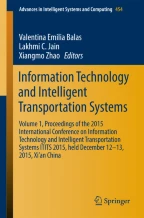Abstract
The selection of spread spectrum sequence in CDMA system directly affects the performance of the whole system, which is one of the key technologies of CDMA system. The generation model of m sequence and m sequence is constructed, and the CDMA communication simulation system is built by using MATLAB/Simulink platform. Then the spread spectrum sequence is introduced into the CDMA system to run and analyze the performance of the two sequences in the CDMA system with the 6 order and 7 order. The results show that the m sub-sequence is rich in resources, and the bit error rate performance of the multi user CDMA communication system is better than that of the m sequence.
Access this chapter
Tax calculation will be finalised at checkout
Purchases are for personal use only
Similar content being viewed by others
References
Yu-xia L, Hong L (2011) Simulation of m sequence generation and related performance based on MATLAB. J Electron Technol 2011(9):44–47
Suchitra G, Valarmathi ML (2013) BER performance of Walsh-Hadamard like Kronecker product codes in a DS-CDMA and cognitive underlay system. J Wirel Pers Commun 2013(3):2023–2043
Chong-qiang T, Quan Y, Xiao Y (2012) Research and simulation on m-sequences, gold sequence and orthogonal gold sequence of spread spectrum communication system. J Electron Design Eng 2012(18):148–150
Mei Y, Zhi-gang Z, Ren-xiu Q, Man-hua L, Yang C (2012) Simulation of direct sequence spread spectrum CDMA communication system based on m sequences. J Yangtze Univ (Nat Sci Ed) 2012(5):192–199
Yan W, Pan S, Chao W (2014) Communication performance of GO-MC-CDMA system based on MATLAB/simulink. J Chongqing Univ Posts Telecommun (Nat Sci Edit) 2014(3):330–333
Ya-Juan L (2014) Simulation and analysis of m sequence based on Simulink. J Yangtze Univ (Nat Sci Ed) 2014(22):327–329
Xiao-Qing M (2014) Design of direct sequence spread spectrum communication system based on Simulink. J Modern Electron Tech 2014(22):277–279
Chang-Geng L, Jia-Ling Z, Ke-Hui S, Li-Yuan S (2009) Research and simulation of chaotic sequence spread-spectrum communication system based on m sequence synchronization method. J Syst Simul 2009(4):1198–1201
Hong L, Peng Q, Ying-ni D, Wan-li C, Jian-xia J, Quan-ling S (2013) Construction and analysis of a class non-linear spread spectrum sequence. Acta Electronica Sinica 41(10):1939–1943
Takeuchi K, Tanaka T, Kawabata T (2015) Performance improvement of iterative multiuser detection for large sparsely-spread CDMA systems by spatial coupling. IEEE Trans Inf Theory 2015(4):1768–1794
Li G-D, Meng W-X, Chen HH (2015) I/Q column-wise complementary codes for interference-resistant CDMA communication systems. J Syst J IEEE 2015(1):4–12
Liu Z, Guan YL, Chen H-H (2014) Fractional-delay-resilient receiver design for interference-free MC-CDMA communications based on complete complementary codes. J IEEE Trans Wirel Commun 2014(3):1226–1236
Kokate MD, Sontakke TR, Bagul CR (2014) Performance of RAKE-LMMSE receivers in wide-band communication systems. J Wirel Pers Commun 2014(3):317–324
Suchitra G, Valarmathi ML (2013) BER performance of Walsh–Hadamard like Kronecker product codes in a DS-CDMA and cognitive underlay system. J Wirel Pers Commun 2013(3):2023–2043
Enkoskya T, Stoneb B (2014) A sequence defined by M-sequences. J Discret Math 333:35–38
Fernandes MAC, Arantes DS (2014) Spatial and temporal adaptive receiver for DS-CDMA systems. J AEU Int J Electron Commun 2014(3):216–226
Zilong L, Yong Liang G, Udaya P (2014) New complete complementary codes for peak-to-mean power control in multi-carrier CDMA. J IEEE Trans Commun 2014(3):1105–1113
Suchitra G, Valarmathi ML (2013) BER performance of Walsh–Hadamard like codes based on complementary sequence sets in a CDMA and cognitive underlay system. J Wirel Pers Commun 2013(2):1311–1329
He CB, Huang JG, Yan ZH, Zhang QF (2011) M-ary CDMA multiuser underwater acoustic communication and its experimental results. J Sci China Ser F: Inf Sci 2011(8):1747–1755
Hong L, Ai-xue Z, Jun-chu F, Jian-xia X, Bing-Rong L, Peng Q (2012) Study of the non-linear feedback functions and a class sub-sequence based on the root-functions. J Acta Electron Sinica 2012(10)
Acknowledgments
This work is supported by the National Natural science foundation of China(Grant NO. 61372094,61071001).
Author information
Authors and Affiliations
Corresponding author
Editor information
Editors and Affiliations
Rights and permissions
Copyright information
© 2017 Springer International Publishing Switzerland
About this paper
Cite this paper
Hong, L., Yong-Lin, Y., Peng, Q., Zhi-Xiang, H. (2017). Simulation and Analysis of the Performance of a Novel Spread Spectrum Sequence in CDMA System. In: Balas, V., Jain, L., Zhao, X. (eds) Information Technology and Intelligent Transportation Systems. Advances in Intelligent Systems and Computing, vol 454. Springer, Cham. https://doi.org/10.1007/978-3-319-38789-5_64
Download citation
DOI: https://doi.org/10.1007/978-3-319-38789-5_64
Published:
Publisher Name: Springer, Cham
Print ISBN: 978-3-319-38787-1
Online ISBN: 978-3-319-38789-5
eBook Packages: EngineeringEngineering (R0)
